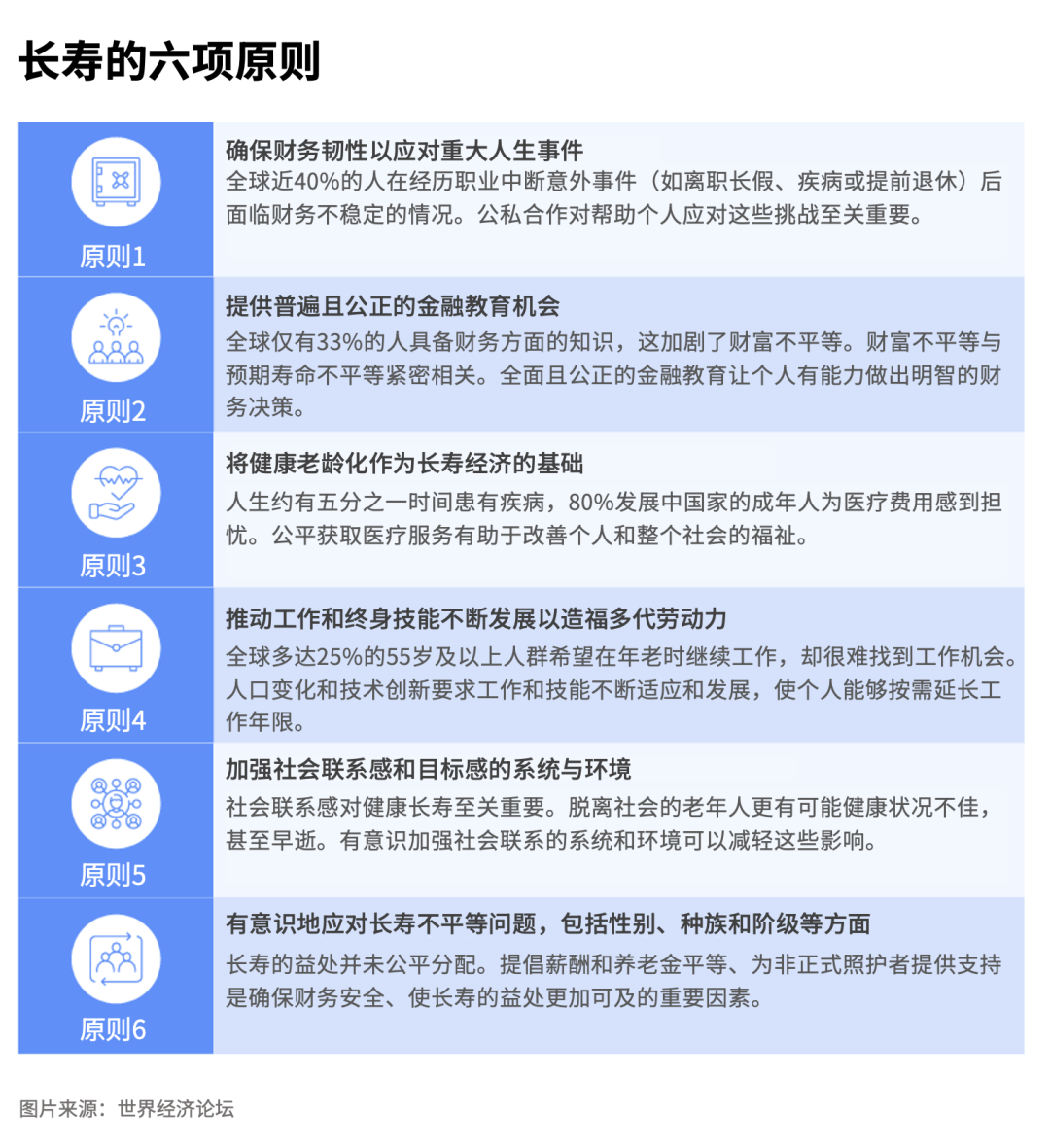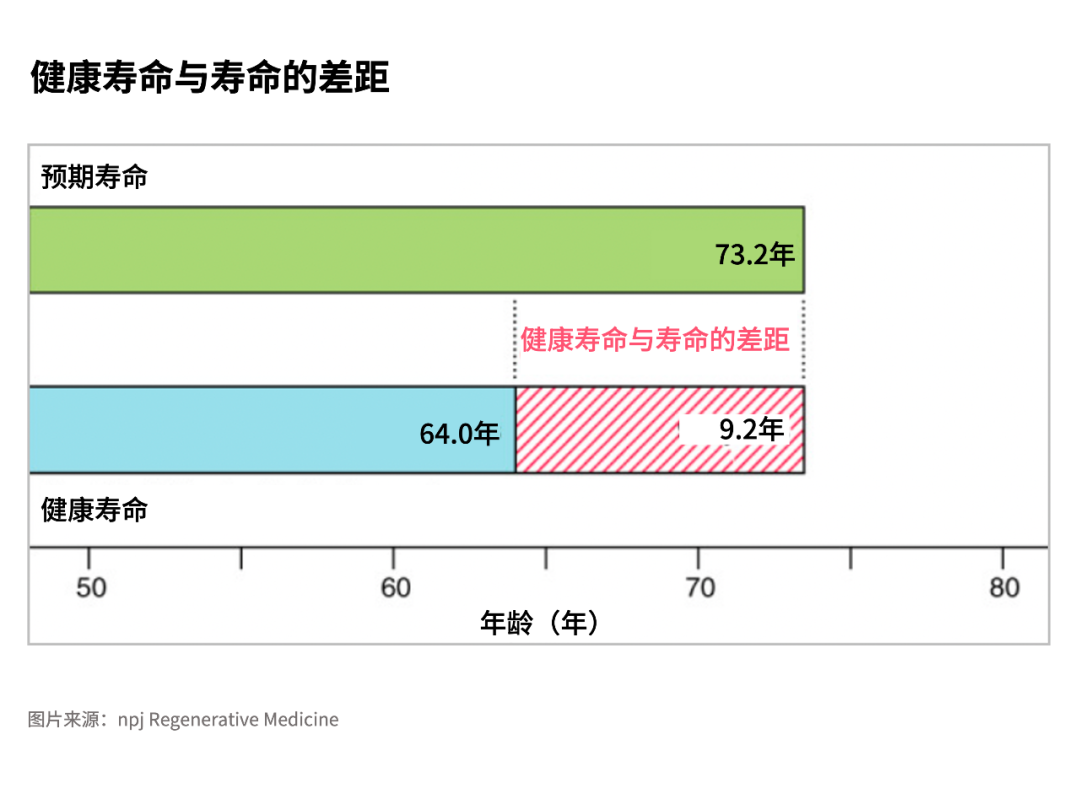Adopting the six principles of the longevity economy can help achieve the Sustainable Development Goals.
Image source:Unsplash/Philippe Leone
Isabela Bartczak
World Economic Forum Expert on the Longevity Economy
With less than six years remaining to achieve the 2030 Sustainable Development Goals (SDGs), only a multidimensional approach can make these ambitious targets truly attainable.
Demographic changes are complicating the issue: as lifespans increase, many people lack sufficient savings to support longer retirement periods, while healthy life expectancy hasn’t kept pace. Meanwhile, inequality continues to undermine quality of life.
Adopting the six principles of the longevity economy can help address the core challenges of an aging society.
Addressing climate change, resolving global peace issues, and eradicating poverty, hunger, and inequality by 2030 are all key objectives of the United Nations’ Sustainable Development Agenda—but achieving these goals appears increasingly challenging. To make real progress, we must tackle these complex challenges from several unconventional angles.With just over five years remaining to achieve the Sustainable Development Goals (SDGs), we must adapt to the evolving needs of an aging society—while accounting for the implications of longer lifespans as we address these demands.For many people, longer lifespans have also brought about significant physical and mental health issues, as well as financial challenges. Research shows that, on average, individuals spend about one-fifth of their lives battling illness, yet many lack sufficient savings to support themselves during this extended period.Moreover, the benefits and risks of longevity are unevenly distributed. To ensure that everyone can fully capitalize on extended lifespans, we must embrace longevity as "cultivating personal resilience over the long term."In 2024, the World Economic Forum released a report outlining six principles for the longevity economy, offering insights that can help address the core challenges posed by longer lifespans. By adopting these principles, we can make meaningful progress toward achieving several of the United Nations’ Sustainable Development Goals.The Six Principles of Longevity.
Image source:World Economic Forum
Today's 5-year-olds could potentially live to be 100. Assuming the retirement age remains in their 60s, these children may need to start preparing enough savings to support themselves through a 40-year retirement period. Yet, a recent survey by an organization focused on economic cooperation and development reveals that about 40% of adults have savings covering less than six months—far short of the roughly 474 months needed to fully fund their retirement, not to mention unexpected financial shocks.While social programs like public pensions have played a critical role in preventing elderly people from falling into poverty, demographic aging, economic challenges, and political instability are casting uncertainty on the long-term viability of these initiatives.To eliminate "poverty in all its forms," we must strengthen financial resilience and promote widespread financial literacy—ensuring that our growing elderly population remains secure and avoids falling into poverty. With the right financial education, individuals can better navigate the financial system, build savings, enhance their economic resilience, and reduce reliance on public pensions (which, by the time people retire, may no longer be able to meet their needs).Goal 3 – Good Health and Well-beingWhile life expectancy may have increased, healthy life expectancy—years lived without illness—hasn’t grown at the same pace, leaving a gap of 9 years between the two. During these extra years of life, poor health often takes a toll on both physical and mental well-being, while also placing a significant financial burden. An increasing number of seniors now require costly long-term care, and contrary to what many might expect, standard health insurance plans typically do not cover these caregiving expenses.As a result, many people may find themselves in a difficult situation, forced to make tough choices between the care they need and their financial circumstances.Practices that promote healthy aging and financial resilience will be key to improving health and well-being for all.Practices that promote healthy aging can help narrow the gap between life expectancy and healthy life expectancy, reducing the need for costly long-term care in later years. However, even if these age-promoting strategies are implemented perfectly, unexpected health events or the need for long-term care may still arise. That’s why it’s especially crucial to ensure individuals have sufficient financial resilience to handle health challenges without depleting their personal resources.The gap between healthy life expectancy and overall life expectancy.
Image source:npj Regenerative Medicine
Goal 4 and 8 – Quality Education, Decent Work, and Economic GrowthIn today’s rapidly evolving digital world, ageism and skill gaps are pushing older adults to exit the workforce prematurely, limiting their ability to save and leaving them feeling disconnected and without a sense of purpose.We urgently need to take action. By providing opportunities for lifelong skills development, we can ensure that people of all ages acquire the competencies necessary to secure and maintain decent jobs.Just as with health, living a long and thriving life requires intervention measures taken before people grow older. Research shows that early childhood education is linked to higher future incomes. This suggests that the education a 5-year-old child receives could very well influence their ability to secure decent employment and build wealth by the time they reach age 65.Opportunities for lifelong skills development are not only crucial for older adults but also ensure that individuals, regardless of the challenges they faced in childhood, can acquire relevant employment skills. This highlights the importance of financial resilience in accessing education and fostering economic growth—after all, when families have the resources to send their children to school without forcing them to drop out early to help support the household, those children are far more likely to thrive throughout their lives.Goal 10 – Reduce InequalityAlthough inequality isn’t explicitly mentioned earlier in the text, it permeates every aspect of longevity: marginalized groups often face higher poverty rates, poorer health outcomes, limited access to quality education, and frequent discrimination when seeking employment. In short, inequality constrains some individuals’ personal resilience far more than it does others.Reducing inequality requires us to consciously address the issue of longevity disparities. We must acknowledge that significant differences exist among people in terms of pension fairness, employment opportunities, and even life expectancy.In the U.S. alone, residents in predominantly Black communities can expect to live 30 years fewer than those in predominantly White communities—despite these neighborhoods being less than 10 miles apart. By promoting the six principles of the longevity economy, we can help address and reduce inequalities in all their forms.Promote sustainable developmentFinancial resilience, education, and opportunities for lifelong skills development can help break systemic patterns of inequality, providing individuals with the essential tools to improve their economic circumstances.Healthy aging and social connections can help narrow health disparities, enabling people to work longer while fostering a sense of inclusion and belonging for everyone.We have just five and a half years left to achieve the 17 Sustainable Development Goals. While we may not yet have fully realized these targets, we can still make meaningful progress by fostering healthy, long, and thriving lives for everyone.
The above content solely represents the author's personal views.This article is translated from the World Economic Forum's Agenda blog; the Chinese version is for reference purposes only.Feel free to share this on WeChat Moments; please leave a comment below the post if you’d like to republish.
Translated by: Di Chenjing | Edited by: Wang Can
The World Economic Forum is an independent and neutral platform dedicated to bringing together diverse perspectives to discuss critical global, regional, and industry-specific issues.
Follow us on Weibo, WeChat Video Accounts, Douyin, and Xiaohongshu!
"World Economic Forum"







